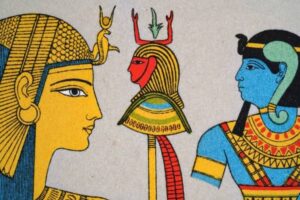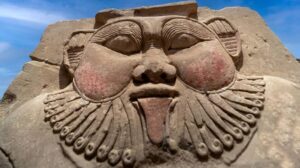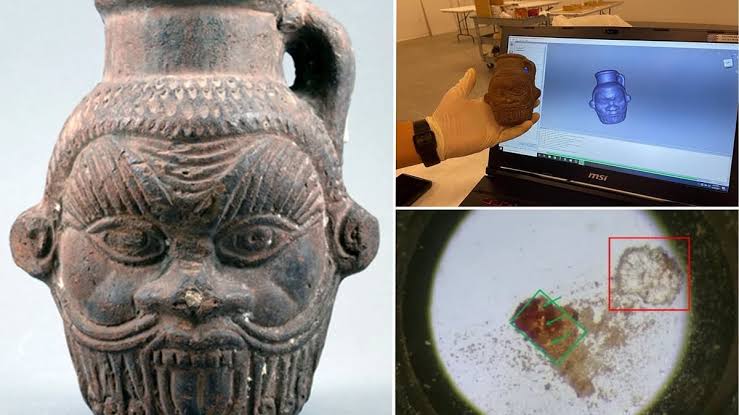A groundbreaking study has revealed the intriguing recipe of an ancient Egyptian cocktail, offering a glimpse into the spiritual and ritualistic practices of the time. Researchers analyzing a 2,200-year-old ceramic mug adorned with the face of the deity Bes have uncovered a unique concoction that blends fermented fruits, psychoactive plants, and unexpected human-derived ingredients.
The Mysterious Bes Mug
The artifact, a palm-sized vessel now housed at the Tampa Museum of Art in Florida, was discovered in Egypt’s fertile Fayum district. This region was known for its diverse plant and animal life. The mug’s design featuring Bes, a deity associated with protection, fertility, and healing, hints at its sacred purpose.
Researchers, led by Professor Davide Tanasi from the University of South Florida, conducted chemical and DNA analyses on residue found inside the mug. Their findings, recently published in Scientific Reports, reveal a cocktail unlike any other in ancient history.
A Psychedelic Recipe
The study uncovered that the drink was a fermented, fruit-based alcoholic brew mixed with psychoactive compounds from the seeds of Peganum harmala, or Syrian rue. These seeds contain harmine and harmaline, alkaloids known to induce vivid, dream-like visions.
Other ingredients included honey, sesame seeds, pine nuts, and licorice, likely added to enhance flavor and mimic the appearance of blood. Additionally, traces of wheat and yeast (Saccharomyces cerevisiae), still used in brewing today, were identified.
Also, read; Will.i.am Reveals Why He’s Never Owned a Home and Lives in Hotels: ‘I Don’t Think I Made It’
However, the most unexpected discovery was the deliberate inclusion of human-derived fluids such as breast milk, blood, and mucous. Researchers suggest these additions were intended to enhance the potion’s potency for spiritual rituals.
Ritualistic Purpose
The cocktail is believed to have been consumed in “incubation rituals,” a religious practice where participants slept in sacred spaces to receive healing visions or messages from deities. The deity Bes, often invoked for magical purification and protection, played a central role in these ceremonies.
The study also connects the cocktail to the Myth of the Solar Eye, an ancient Egyptian tale in which Bes calms the bloodthirsty goddess Hathor with an intoxicating, plant-based drink. This suggests the mug may have been used in rituals reenacting this myth.
Implications of the Findings
This discovery challenges previous assumptions about the use of Bes mugs, which were thought to hold water, milk, wine, or beer. The detailed chemical analysis of the Tampa Bes mug is the first of its kind, and researchers now plan to study similar vessels, including those at the Allard Pierson Museum in Amsterdam, to determine if a standard recipe existed.
3D Reconstruction and Public Engagement
To bring this ancient artifact to life for modern audiences, the Tampa Museum of Art has created a 3D-printed replica of the Bes mug. This scaled model allows researchers and visitors to visualize its original use and even measure its capacity—approximately 90ml, a typical serving size of the cocktail.
“The 3D print can also be used for public outreach, especially for individuals with visual impairments or cognitive disabilities,” Professor Tanasi explained.
A Window into Ancient Rituals
This discovery offers a fascinating look at how ancient Egyptians blended spiritual beliefs, medicinal practices, and mythology into their daily lives. By uncovering the recipe for this ritualistic drink, researchers have provided a rare glimpse into the complex and mystical culture of ancient Egypt, shedding light on the symbolic and practical significance of their sacred rituals.
With further analyses on similar artifacts planned, the study of the Bes mug and its enigmatic cocktail is far from over, promising even more insights into the rituals and beliefs of one of history’s most fascinating civilizations.




